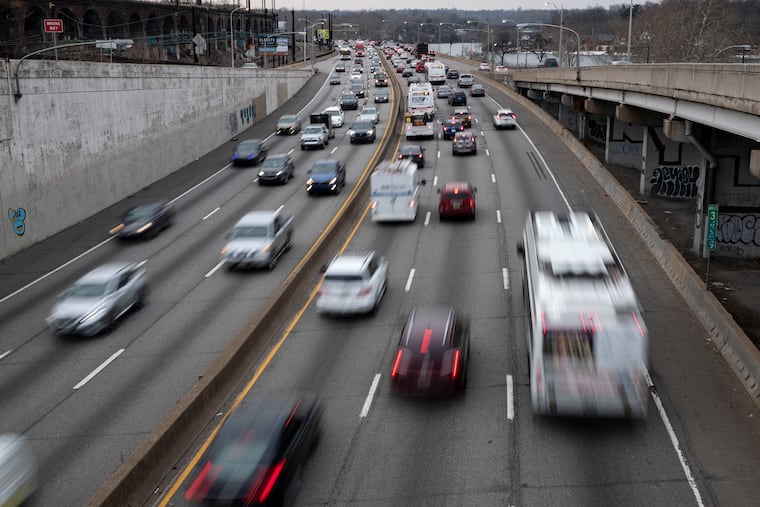What happened to using highway shoulders as additional lanes on the Blue Route and Schuylkill Expressway?
The plan is ongoing and it’s part of a project called Transform 76.

If you’re a driver in the region, chances are a portion of your time stuck in traffic has been spent on I-76, the Schuylkill Expressway, the asphalt river connecting Philadelphia and Montgomery County.
Originally completed in 1960 and designed to transport 35,000 vehicles per day, the expressway currently hosts over 500,000 vehicles daily, including traffic from the arterial corridors, according to PennDot.
As a way to alleviate congestion, in 2016, PennDot introduced the idea of using the expressway shoulders as an additional lane during rush hour, as part of their Transform 76 plan.
The plan received mixed reviews from experts at the time, with descriptors such as “pragmatic” and “counterproductive” thrown into the conversation.
Eight years later, not much has come of using the shoulders, prompting a reader to ask Curious Philly, The Inquirer’s forum for questions about the city and region: Whatever happened to the plan to use highway shoulders for an additional rush hour lane on the Blue Route and Schuylkill Expressways?
» ASK US: Have something you’re wondering about the Philly region? Submit your Curious Philly question here.
Using the shoulders to alleviate congestion is still in the works, however, drivers won’t see tangible changes for a couple of years, said PennDot spokesperson Brad Rudolph.
What is Transform 76?
Transform 76 looks to reduce traffic volume and improve safety by:
Installing variable speed limits that change depending on road conditions.
Installing queue warnings to reduce rear-end crashes and keep drivers aware of changes in road conditions.
Turning two sections of I-76 highway shoulders into flexible lanes.
Widening bridges.
According to PennDot, it might seem like the plan isn’t moving because the flexible lanes have not been built, but this phase of Transform 76 began in 2018 with the implementation of variable speed limits and queue warnings.
The agency took over the signals that control digital traffic signs that announce variable speed limits and queue warnings from Montgomery and Philadelphia Counties — including North and South Gulph Road, Route 23, Ridge Pike, and a portion of Henry Avenue — involving about 80 intersections on I-76 and parallel arterial corridors, between 2018 and 2021, Rudolph said.
This allows PennDot to manage alerts remotely from their regional traffic management center. This is a cornerstone of the implementation of the flexible lanes because one of the functions of the signs is alerting drivers when they can and can’t use the shoulder as an additional lane.
Schuylkill Expressway and Blue Route flexible lanes
The next phase of Transform 76 is to create flexible lanes and widen bridges in two sections of the expressway:
From east to west between the Pennsylvania Turnpike and I-476 — best known as the Blue Route.
Westbound I-76, between Route 1 (City Avenue) and Belmont Avenue.
Construction is expected to cost over $400 million. While the westbound section is expected to be the first to undergo construction, it won’t start for at least three more years.
“You are basically building on the side of a mountain and off of a cliff in some spots,” Rudolph said. “It takes a long time because there are so many considerations and things that need to be accounted for.”
The westbound section is on track for construction in 2027, while the Blue Route will likely begin construction in 2028.
Some road closures are expected, but, according to Rudolph, the nature of building off to the side of the road will reduce the effect on travel conditions.